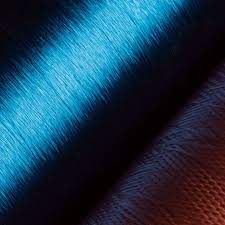Synthetic Silk Startups: Companies Reshaping Silk Production
As a species, we have relied on silk for centuries. It is seen as an incredible resource in manufacturing clothing, textiles, cosmetics, and medicine. However, there are many concerns over silk usage harming the environment. So, what are startups doing with synthetic silk to help turn the tide?

Why is Traditional Silk a Problem?
Silk made from spiders requires intensive environmental resources. Manufacturing is reportedly adding strain to greenhouse gas levels and is even swallowing up huge water supplies. Therefore, eco-friendly entrepreneurs have long searched for less intensive, vegan alternatives.
This has escalated to the point that the synthetic silk market is reportedly set to extend beyond $7 billion by decade end. Artificial silk is now used in many global markets, is affordable to source, and mimics the natural resource.
Synthetic silk is sought-after as it is cruelty-free and easy to manipulate. What’s more, spider silk is increasingly challenging to work with - and is time-consuming to manage.
Synthetic alternatives to spider silk retain its durability, its flexibility, and its tensile strength. Ultimately, industries across the world are considering its near-perfect mimicry as a sustainable alternative.
What Are Startups Doing to Support the Industry?
Across the US, multiple firms are working hard to make synthetic silk the new standard. Thankfully, there are many bodies and brands keen to take the resource on.
Bolt Threads, for example, is an ethical textile production firm. Their textile products arrive without any spider cultivation, cruelty free, and close mimicry of natural resources. Global fashion is under pressure to produce cruelty-free, sustainable clothing. As such, Bolt threads focus on retaining flexibility and strength in all its produce.
Therefore, US fashion lines can produce fantastic looks without fear of their fabrics falling to pieces.
Kraig Biocraft, meanwhile, is putting synthetic silk to work with regard to polymer production. Polymers from KB are designed to emulate spider production - they advise spider silk is stronger than steel. Therefore, their polymer chains are designed to offer flexibility and strength cross-industry, even in military applications.
KB reports that demand for technical fiber has expanded dramatically in the past decade or so. According to their guidance, the market itself was already worth more than $120 billion by 2012.
KB recognizes that it is not sustainable to run ‘farms’ of spiders to produce silk. Not only this, but it is highly labor-intensive. As such, synthetic silk is rapidly becoming their focus.
How Will This All Change the World?
Unfortunately, much of our clothing still arrives through less than sustainable processes. What’s more, the environmental and economic impacts of spider silk are far-reaching. That said, they are not impossible to trim back - and firms developing synthetic alternatives can undoubtedly help.
Fundz offers real-time data on startups working with synthetic standards across the There are many entrepreneurs and firms ready to make fashion and industry more sustainable - and they’re emerging all the time.
SOURCES
https://www.kraiglabs.com/spider-silk/
https://www.wired.com/story/the-race-to-put-silk-in-nearly-everything/
https://ecocult.com/why-does-silk-have-such-a-bad-environmental-rap/